Nobody has ever imagined that a 15th-century old city in Bangladesh that has lost years ago persevered so well that one day it will be on the list of UNESCO World Heritage Sites. Yes, the Historic Mosque City of Bagerhat which is located in the outskirts of Bagerhat city, Khulna Division of Bangladesh is that famous site that is now attracting many historians and visitors around the globe. But what is listed under UNESCO heritage site? What is so special about this destination and you should visit this one in Bangladesh or not?
Discover the history of this lost ancient heritage city and explore the hidden mosques in its vicinity with us.
Introducing Mosque City of Bagerhat
Bagerhat was founded in the 15th century by the warrior saint Turkish general Ulugh Khan Jahan and was initially known as Khalifatabad, or Mint Town of the Bengal Sultanate.
The city’s infrastructure has the remarkable technical expertise and thus there are numerous mosques and early Islamic monuments made of bricks only.
All these are setting a great example of an architectural epitome in Bangladesh. Forbes has mentioned this mediaeval city, as one of the 15 lost cities lists.
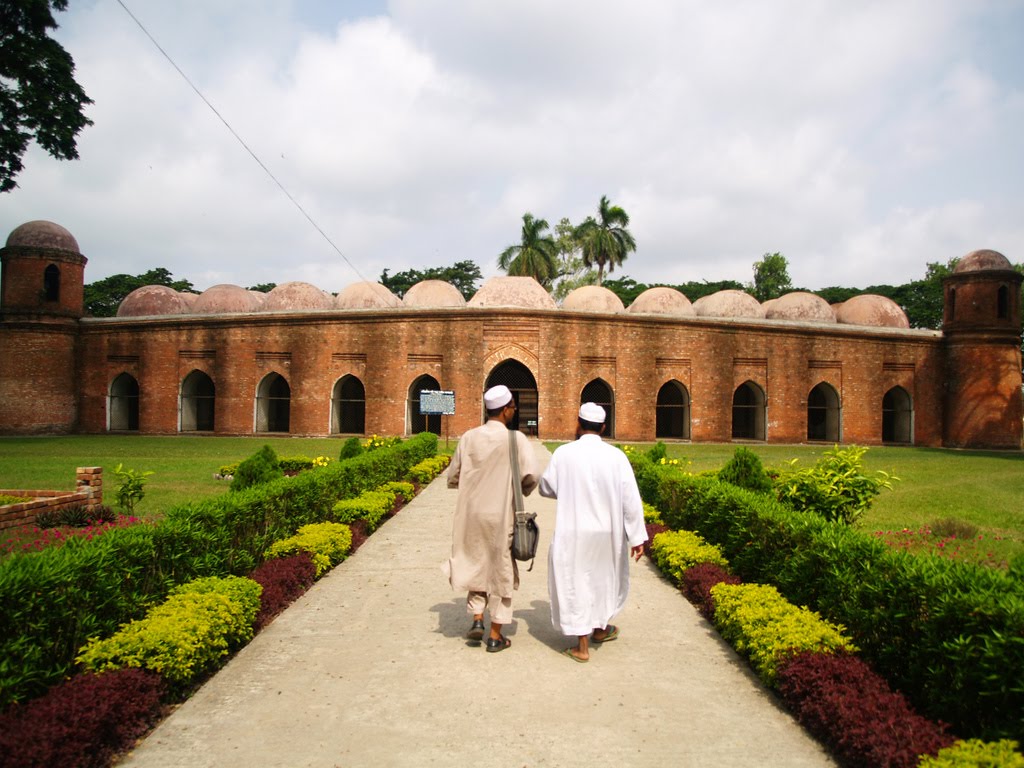
The reason behind this is that it features more than 50 Islamic monuments which were earlier hidden in the vegetation and recovered after centuries. The complex was designated as a UNESCO World Heritage Site in 1983.
Because of the dense forest habitat and the presence of tigers, the city was built with special infrastructure to make it accessible. All of the monuments are now located in the natural setting of what is now farmland, surrounded by palm trees.
Chronicles of Mosque City of Bagerhat
Bagerhat’s history may be traced back to the Bengal Sultanate, which was ruled by Sultan Nasir al-din Mahmud Shah. It was founded in the 15th century by Ulug Khan Jahan, a Sultanate governor; an inscription on his tomb states that he died in 1459, indicating that the city was built in the mid-15th century. He was in charge of establishing a planned community. The Delhi Sultanate also desired to establish an outpost of Islam in the remote area of India, Bengal, for political and religious reasons and assigned this duty to Ulug Khan Jahan. Later Khan Jahan adorned his capital city with numerous mosques (traditionally 360), bridges, roads, reservoirs, palaces and mausoleums.
Architectural Description of the Mosque City
The city’s layout is influenced by Islamic architecture with Mughal and Turkish architectural forms blending to create the adornment. Baked bricks were employed in the construction of buildings, which degraded over time due to saline soil and weather patterns.
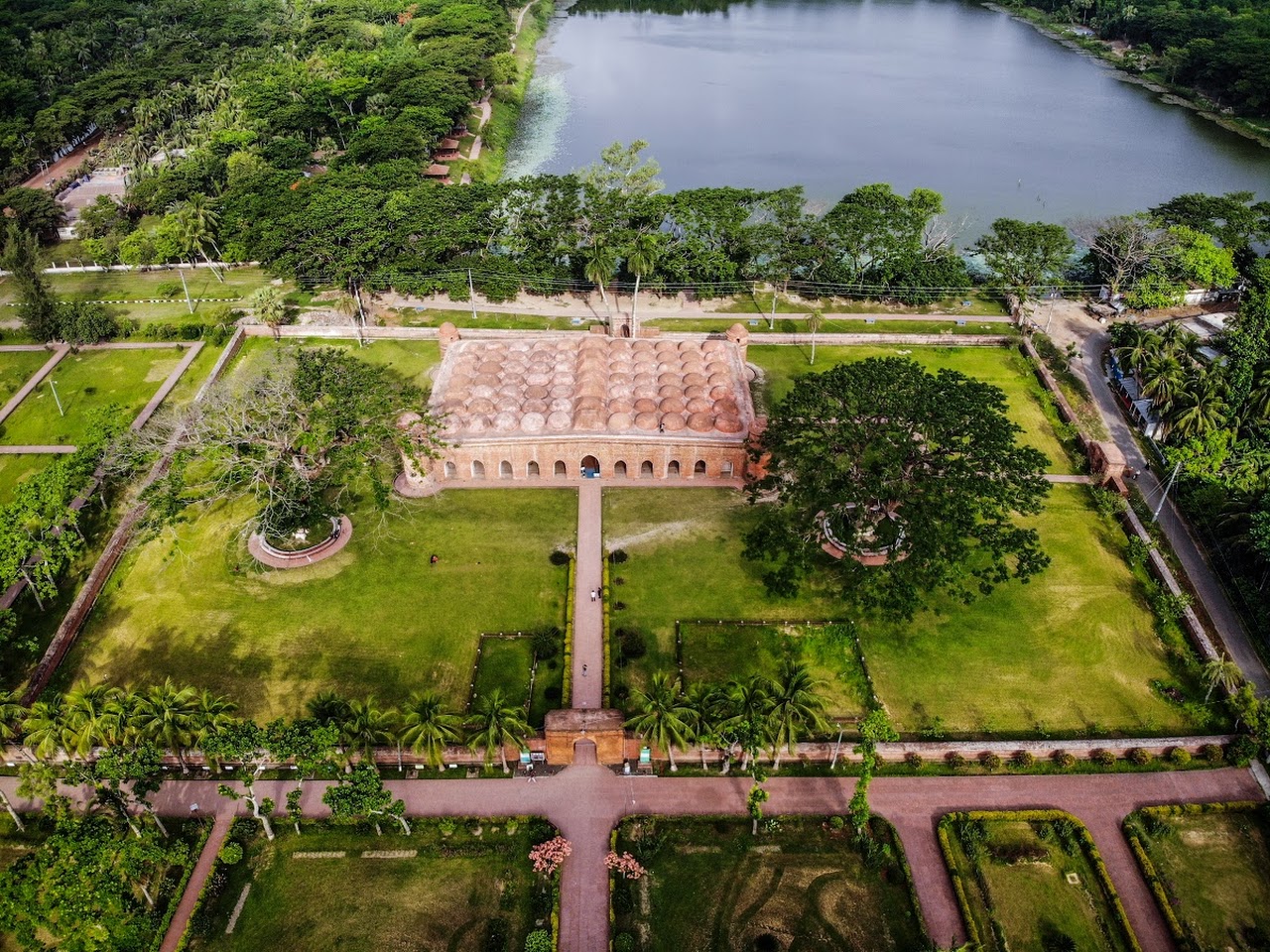
Seven of the ten mosques and tombs in the town found and restored are namely the Shait Gumbaz Mosque, Ulug Khan Tomb, Ranbijaypur Mosque, Bibi Begni Mosque, Singra Mosque, Chunakhola Mosque, and the Nine Domed Mosque. They all are designed in the Ulugh Khan era, while the Ten Domed Mosque, Rezai Khan Mosque, and Zinda Pir Tomb, are of a later period.
Top Monuments at Mosque City of Bagerhat
Let’s discuss the various mosques and toms build inside the Mosque City of Bagerhat.
1. Khan Jahan’s Mausoleum – Mosque City of Bagerhat
The shrine of Khan Jahan Ali is dedicated to the founder of Bagerhat. The single-domed dargah, which serves as Khan Jahan’s mausoleum and is located on the northern embankment of the Thakur Dighi, is Bagerhat’s most important monument. Legends say that Khan Jahan Ali picked this location a few years before his death.
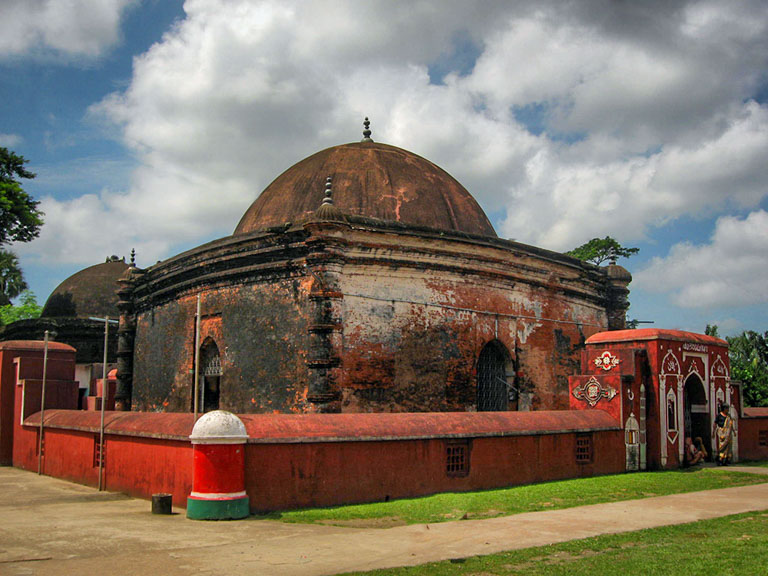
He erected a gravestone on which his death is inscribed – Dhu al-Hijjah 27, 863 A.H. Mausoleum’s building was made of bricks. Arabic and Persian verses from the Koran are written. About the walls of the crypt are inscriptions that provide historical information on the life of Ulugh Khan Jahan. It’s now a spot for pilgrims where people pay tribute to the man who spent his life constructing the city and its monuments.
2. Shat Gombuj Masjid
This masjid is renowned globally for its architecture. The Shat Gombuj, or Sixty Pillar Mosque, is built on the eastern bank of a water tank. It is one of the country’s oldest mosques, and it is characterised as a “historic mosque reflecting Muslim Bengal’s Golden Era.”
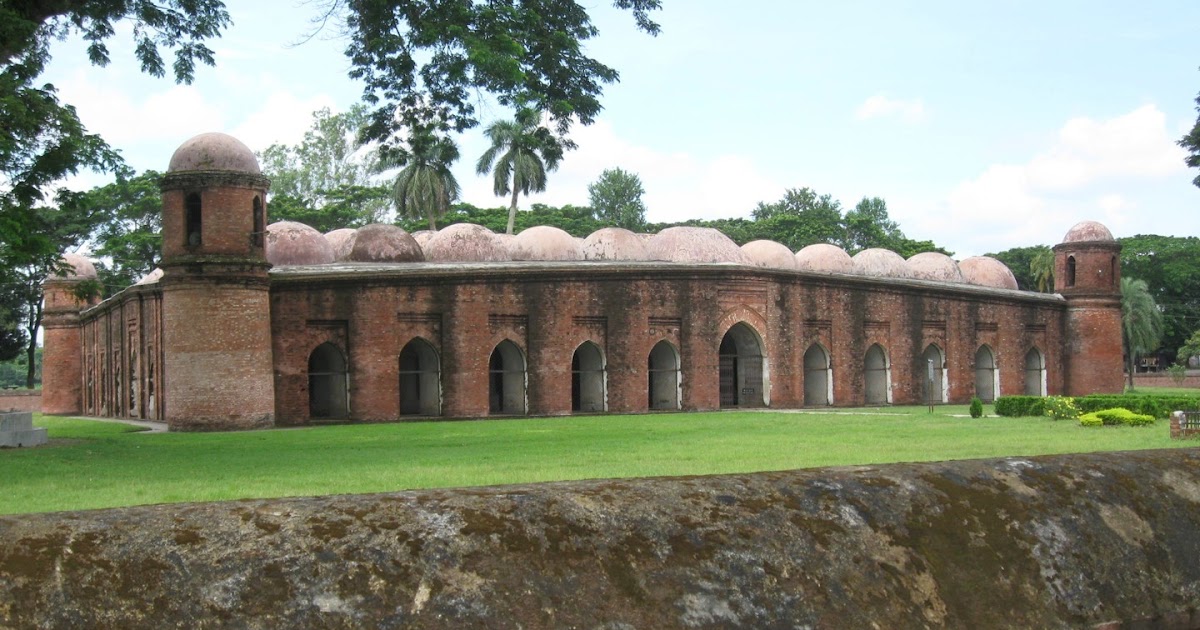
The mosque is remarkable in that it is supported by 60 pillars that support 77 elegantly curved domes that have eroded over time. It contains seven four-sided centre domes that are designed in Bengali style. Khan Jahan Ali founded it around 1440. Khan Jahan Ali’s court was also housed in the mosque. Every year, it attracts a huge number of tourists and visitors.
Also Read: Top Tourist Attractions At Abu Mena – Egypt’s UNSECO HERITAGE SITE
3. Nine Domed Mosque
The Nine Domed Mosque is located to the west of the Thakur Dighi tank and was built in the 15th century, it is close to Khan Jahan Ali’s Tomb. Its western wall conventionally faces west towards Mecca, where the mihrab is inset on the western wall. Terra cotta floral scrolls and flower motifs are the decorations seen around the mihrab. This structure was also affected by sulphates. It has been since substantially restored. Close to this mosque is the Zinda Pir Mosque and Mazar which are in ruins.
4. Singara Mosque – Mosque City of Bagerhat
On its southeastern side, the Singara Mosque is located across the road from the Sath Gumbaj Mosque. It has a single, massively constructed dome that is very wide. The dome is supported by strong walls and crowned with a cambered cornice, as is typical of the Khan Jahan Ali architecture.
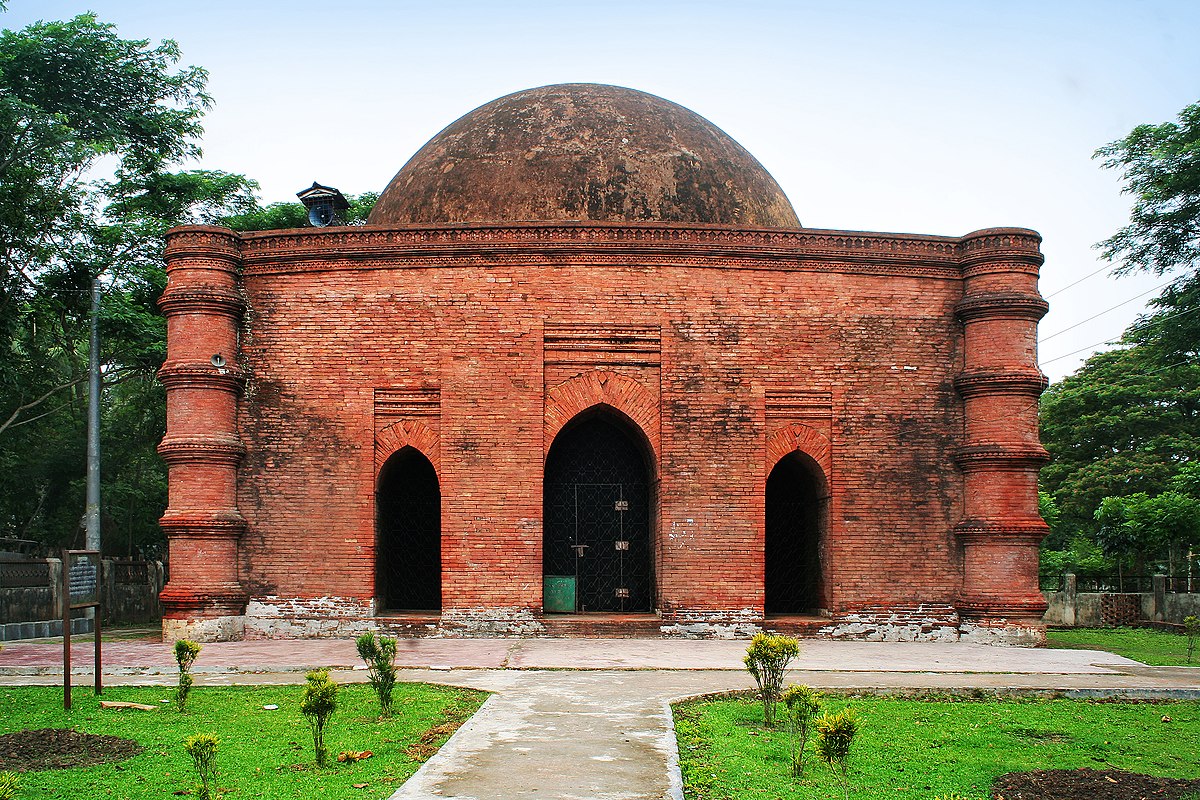
It includes four rounded corner turrets with five bands of brick mouldings and softly curved cornices on all four sides. The central mihrab on the west wall is sparsely adorned with terracotta rosettes and foliate designs, which are framed inside rectangular brick mouldings.
The Bibi Begni Mosque resembles the Singara Mosque, but with larger and more extensively constructed walls.
5. Ronvijoypur Mosque
The Ronvijoypur Mosque boasts Bagerhat largest dome and it is 11m in length. The dome is supported by arches and pendentives. The external wall has a little curvature and the corners have tapering round turrets.
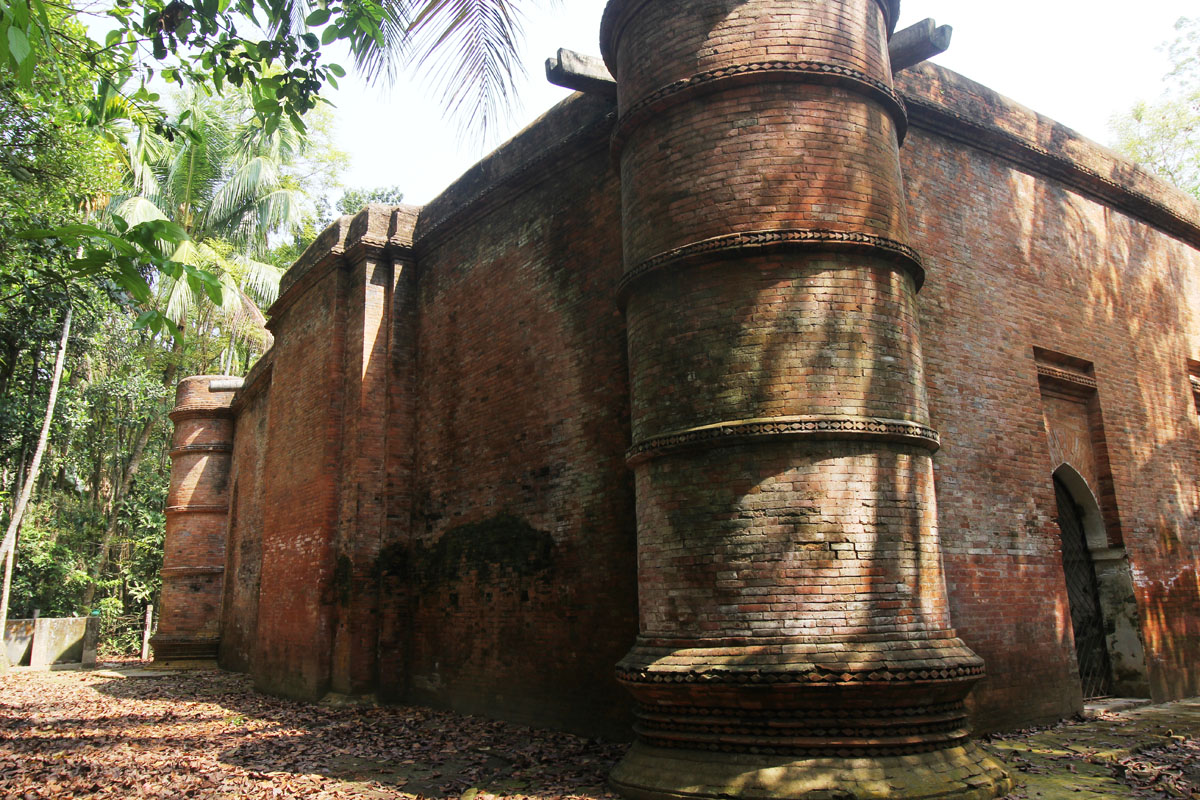
The inside of the mosque is simple. The primary mihrabs, on the other hand, are adorned with floral motifs. It is located is on the other side of the Khan Jehan Mausoleum. It was constructed in the Khan Jehan architectural style. Throughout the 1960s and 1970s, it was restored several times.
6. The Chuna Khola Mosque
Built in the 15th century, the Chuna Khola Mosque stands in the middle of rice fields in the village of Chuna Khola. It is the transitional monument from the Khan Jehan style that features three mihrabs, the largest of which is in the centre and projects outwards. It has a frontal arched hemispheric dome. In terms of exterior embellishments, it differs significantly from the Khan Jehan style mosque. There are four turrets with curved cornices on the building. Due to atmospheric conditions, the brick walls of this mosque are deteriorating.
7. Six-Domed Mosque
The Rezakodha Masjid is another name for the Six-Domed Mosque. It has six domes supported by stone columns and was built in the 15th century near the Thakur Dighi pond. The main mihrab, which was protected under the Antiquities Act, featured a chain and bell design. However, because it was entirely in ruins, a new structure was constructed, which was later demolished and the previous ruins were preserved.
Conclusion
Conservation and restoration efforts have been maintained by UNESCO and Bangladeshi Government. But despite this, some of the original elements were destroyed in earlier interventions. Many of the structures are still in use for religious and secular purposes, contributing to social purposes and preserving ancient practices. If you love discovering ancient mosque and heritage sites then should pay a visit to this site.
Also Read: Australian Convict Sites – World Heritage Site Built By The Convicts!

